Here’s a quiz. What links these four things together? There are pictures to help you:
- A replica (under construction)of the Basque Galleon, San Juan,
- Some strangely shaped pieces of wood,
- The Wellbeing of Future Generations (Wales) Act 2015, and
- A template drawing of the ‘sections’ of a mature oak tree.
* There’s a Mayflower II update at the end from Plymouth Rock Massachusetts.
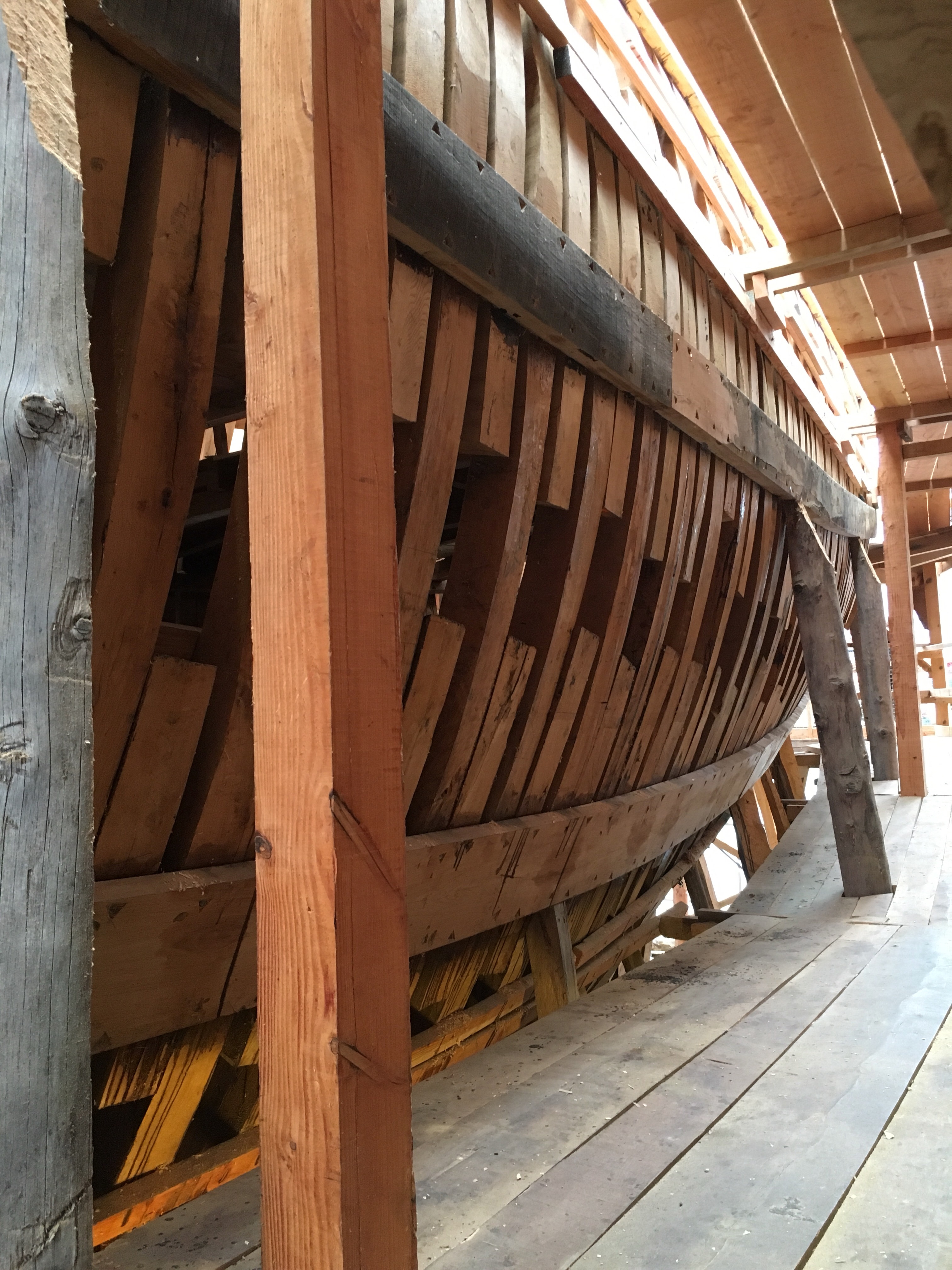
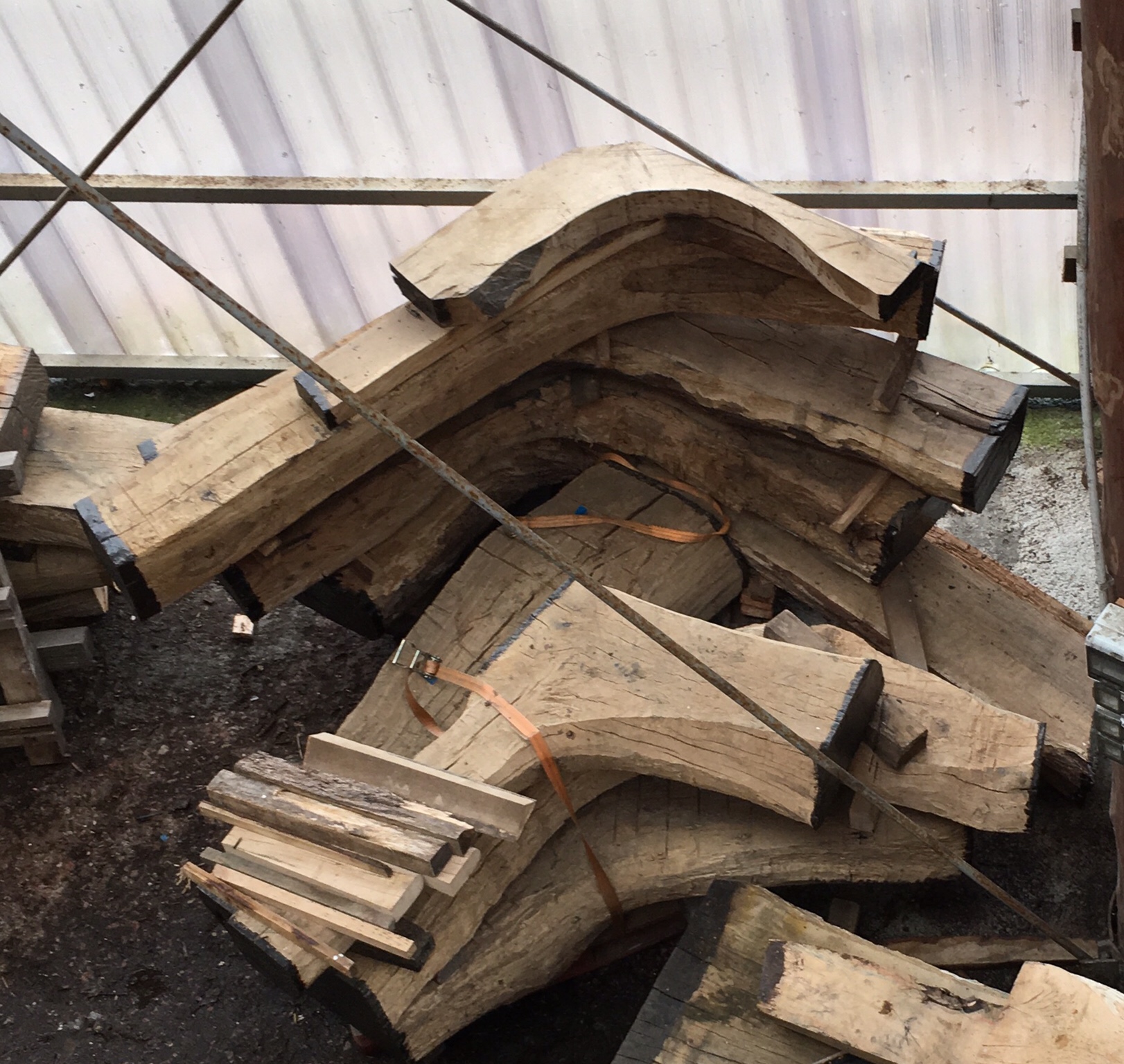
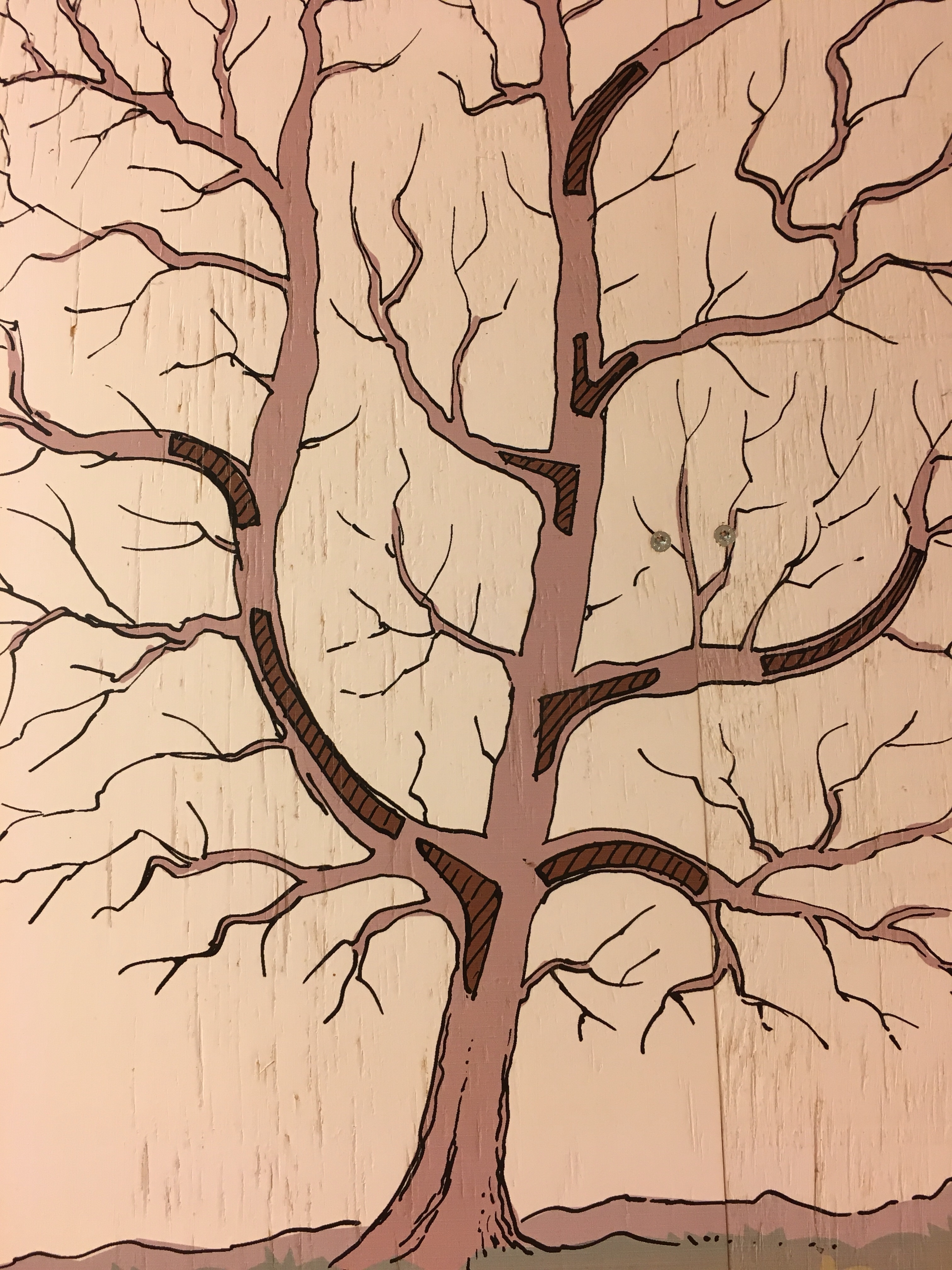

The answer to what links these things is Time, more specifically, long term time.
Planting Oak trees to build ships. At the end of the first leg of my Churchill Fellowship visit to the Basque Country (link to previous posts here), I had Saturday ‘off’, to do some tourist activities. This took me, via a section of the Camino de Santiago, to the Alabola Itsas Kultur Fakoria in Pasai, San Pedro, on the eastern edge of San Sebastián, (both deeply self-indulgent pastimes, I was enjoying myself).
Alabola is basically a museum dedicated to Basque wooden shipbuilding. At the moment they are making a faithful copy of a famous ship the San Juan which sank off Newfoundland in 1565. Yes, the Basques were busy trading in North America in the 1500’s and yes, the San Juan is being re-constructed using ancient techniques – you can watch people chopping away with axes and adze’s; brilliant!
Watching the activity of the ships builders it’s very clear that this isn’t a quick process, and when you look at the new San Juan it is also very clear that this is something that is being built to last.
But what’s this got to do with Time? In the supporting exhibition there’s an explanation of how the wood for the ships was supplied. This wasn’t a simple case of just heading to the nearest forest, chopping down a handy tree and cutting it into useful (transportable) pieces.
There was actually an industry, and a design led process (yes, they had such things in the 1500’s) that produced the required components for ship building. This was achieved by working ‘with’ living organisms, mostly oak trees. A component of this ‘working’ involved pruning, to shape the oak trees so that they grew in the required ‘ship-shaped’ ways. This is where the template fits in.
Most people will know that oak trees don’t grow overnight. Oak trees don’t even produce acorns until they are about 50 years old. According to the Woodland Trust, it takes up to 150 years of growing for an oak tree to produce wood that is suitable for use in construction.
I’ve been trying to do some calculations here. If the average lifespan in the 1500’s was about 40 years, it would be the great great grandchildren of the person who planted the oak tree who would be able to use it for ship building…
I may have my calculations wrong, but I’m sure you get the gist. Basically you are doing things now for the future; planting oak trees and managing them, for your descendants (people several generations in the future who you will probably never meet). They will feel the benefit of your actions, not you. An expert in Behavioural Economics will need to explain that one to me.
Whatever the explanation, that feels like a solid example of (very) long-term thinking.
Does historic practice influence current attitudes? I’m not going to try to answer this, just give two examples. In the conversations I had during my visit the idea of time, and thinking long-term came to the surface frequently:
- Speaking to someone about my visit to Mondragon Team Academy (MTA) (link to the Social Entrepreneurs Bootcamp post here) I asked if they had noticed any impact of MTA in the wider Basque community. Their answer was very matter of fact, “it’s only been 10 years they have been doing it, these things take time”.
- In conversation with Pablo Aretxabala and Jabi Salcedo from K2K Emocionando they were explaining a programme they were involved to the improve the economic performance of organisations in a locality. They were 18 months into the programme and were “in the middle of the beginning, these things take time…”
Maybe the influence of ancient Basque foresters and ship builders does reach down the years?
What has this got to do with Wales? You’ll have spotted the earlier reference to the Well-being of Future Generations (Wales) Act 2015. This places requirements on public bodies in Wales to act in accordance with the principles of sustainable development.
One of the areas the Act talks about the behaviours required by these bodies, described as The Five Ways of Working, illustrated below.
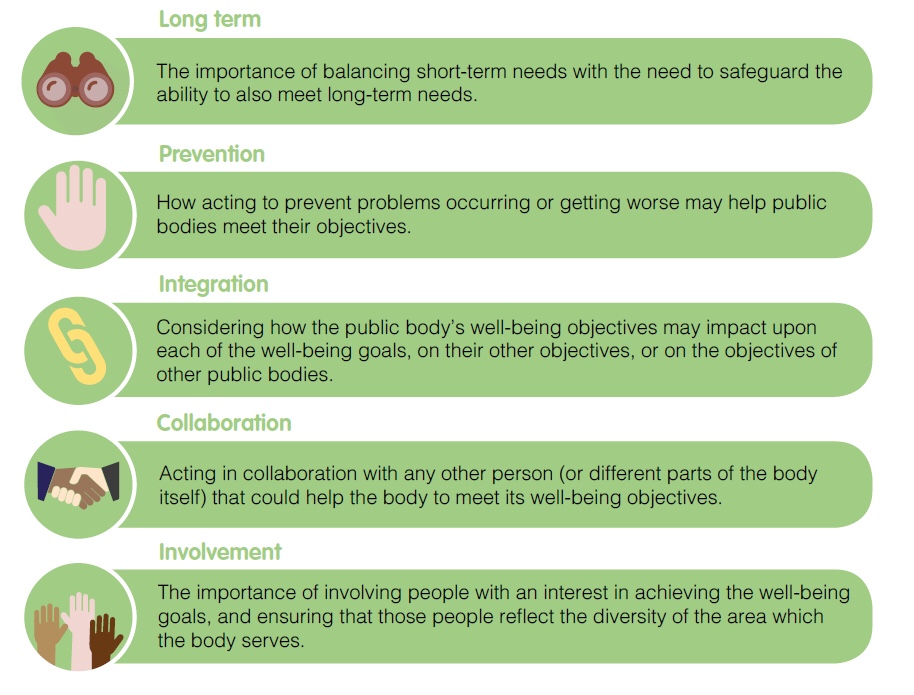
The ‘Way of Working’ that’s the focus of this post is Long Term Thinking. Public bodies are expected to behave in a way (the things they do, the decisions they make) that recognises: “the importance of balancing short-term needs with the need to safeguard the ability to meet long-term needs”.
That’s a tricky thing to do, and also demonstrate that you have actually done it. There are lots of questions being asked in Wales about things like; ‘exactly how long in years is long-term?’, ‘ how do you measure if people are behaving in this way?’, ‘are there different levels of commitment to long-term.’
All good questions I’m not going to try and answer other than to say…
Would your actions, decisions and behaviours pass the Basque Shipbuilding Test? Are you “planting oak trees to build future ships?” If you are doing something similar, then you probably are thinking long-term.
So, What’s the PONT?
- Taking time to build something, and building it to last is as relevant now as it was when the San Juan was afloat in 1565.
- Doing something now, that will benefit people you’ve never met, a very long time after you have expired is a challenging idea. I’m not sure most people see it as a realistic option.
- Long-term Thinking is a difficult behaviour to measure. Maybe the response to the question, “are you planting trees to build future ships?” might give you an insight?
UPDATE FROM THE MAYFLOWER II AT PLYMOUTH ROCK
This is hugely pleasing, Mayflower was the ship that brought the English Pilgrim Settlers to the USA in 1620. The replica Mayflower II is currently undergoing repairs, ready for the 400th anniversary of the landing in 2020.
The shipwrights have put out a request for people to ‘volunteer’ trees they might have in their backyard to be used in the construction. And guess what, there’s a template (drawing) you can use to work out if you have a suitably shaped tree.
It looks quite like the one I saw in San Sebastián, which probably isn’t surprising, but it made me happy. Mayflower II pictures below.
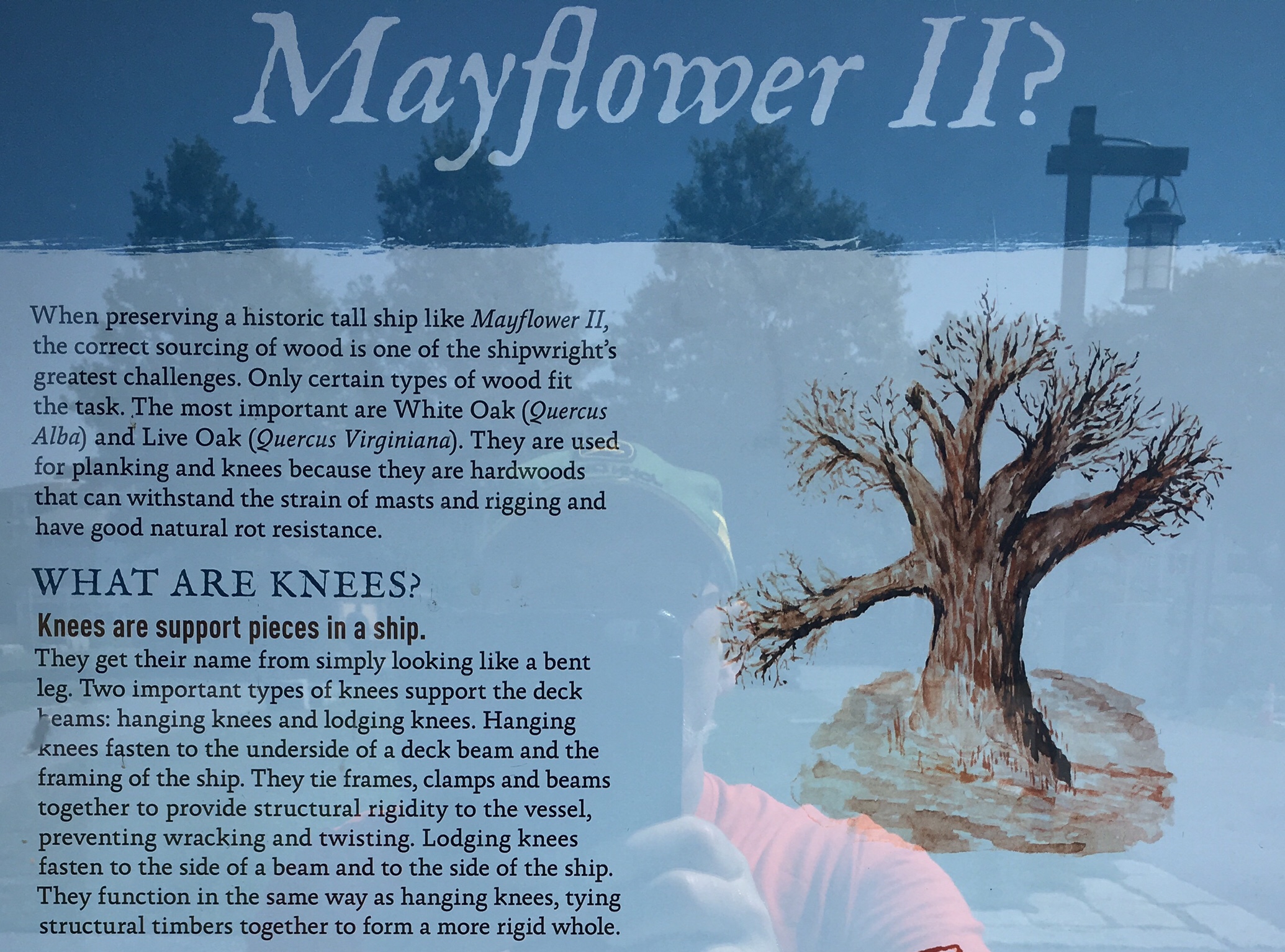
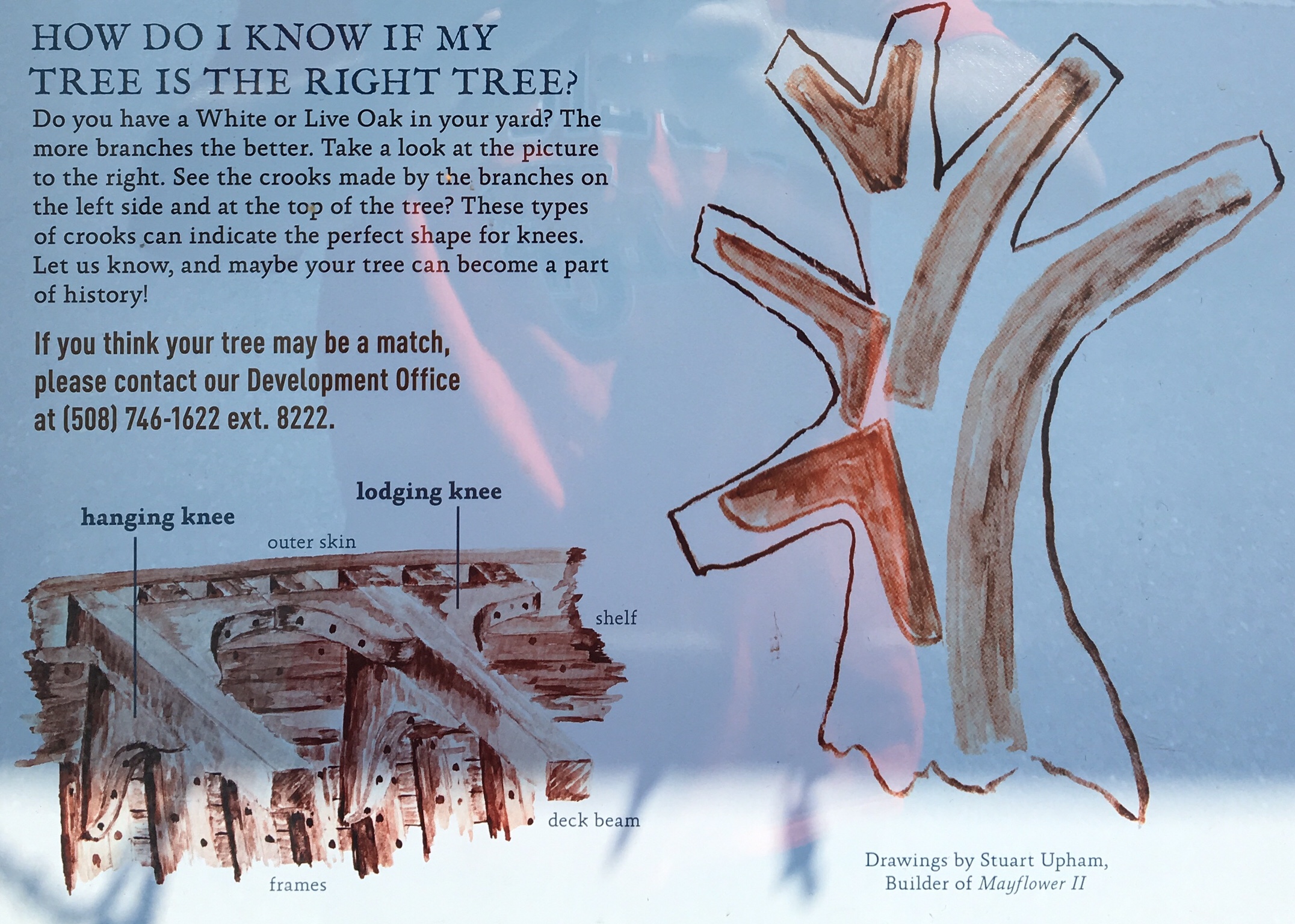
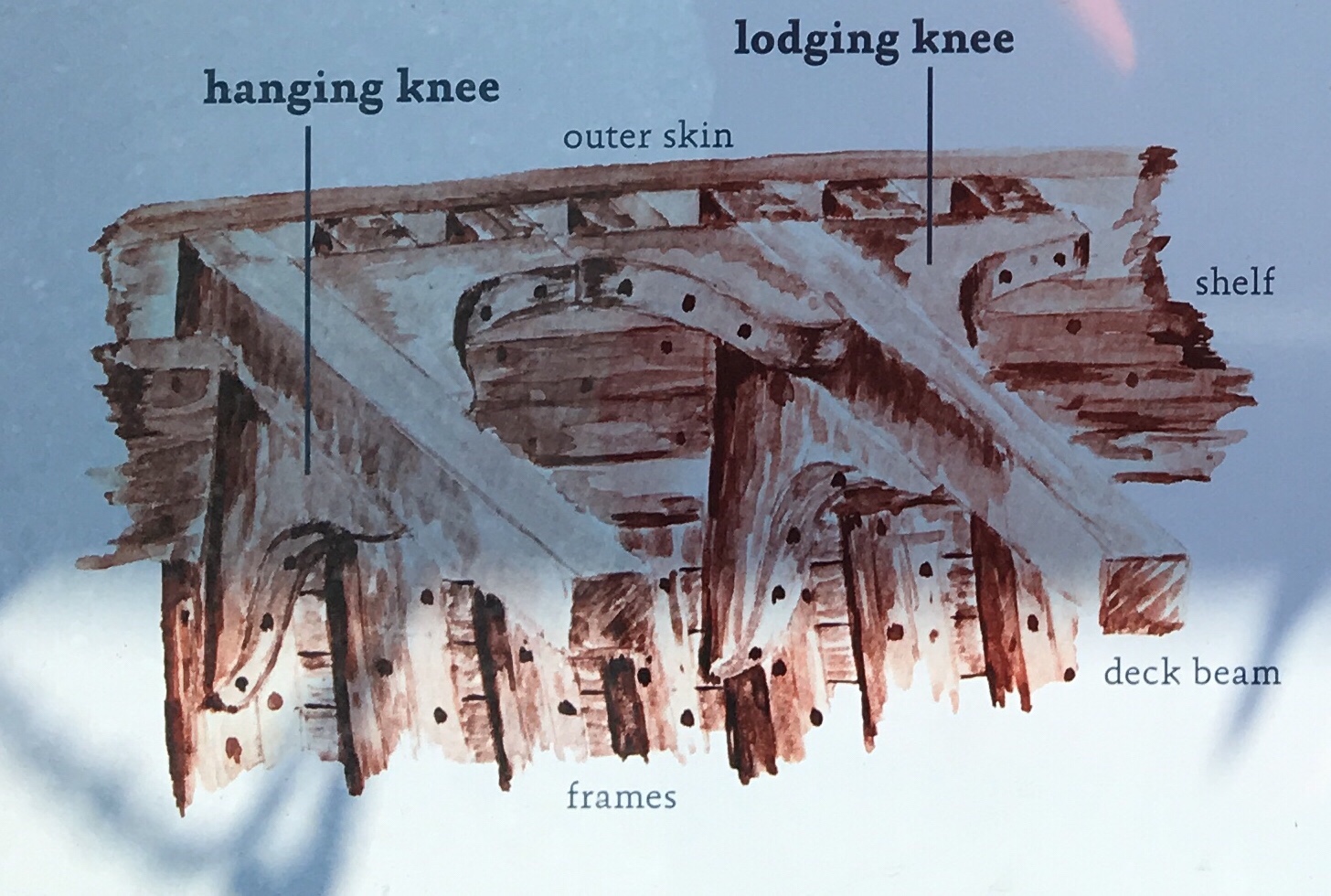
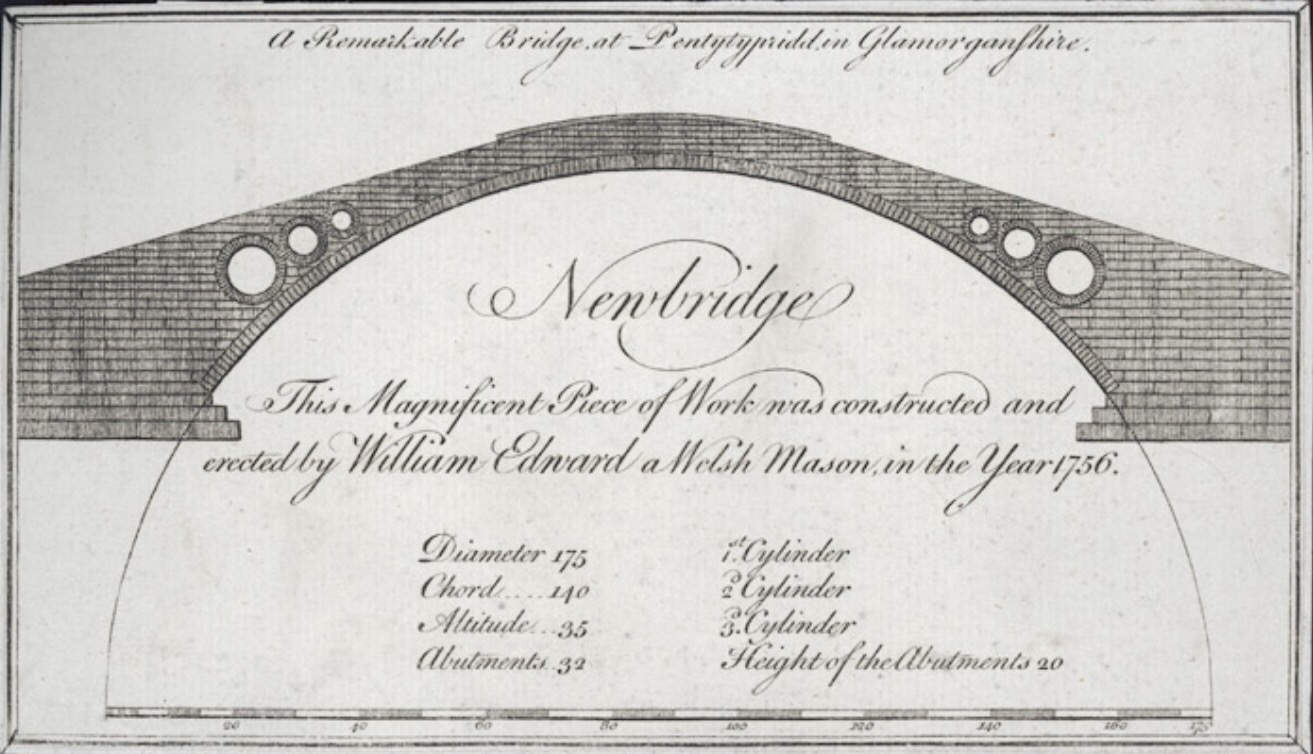
Leave a comment